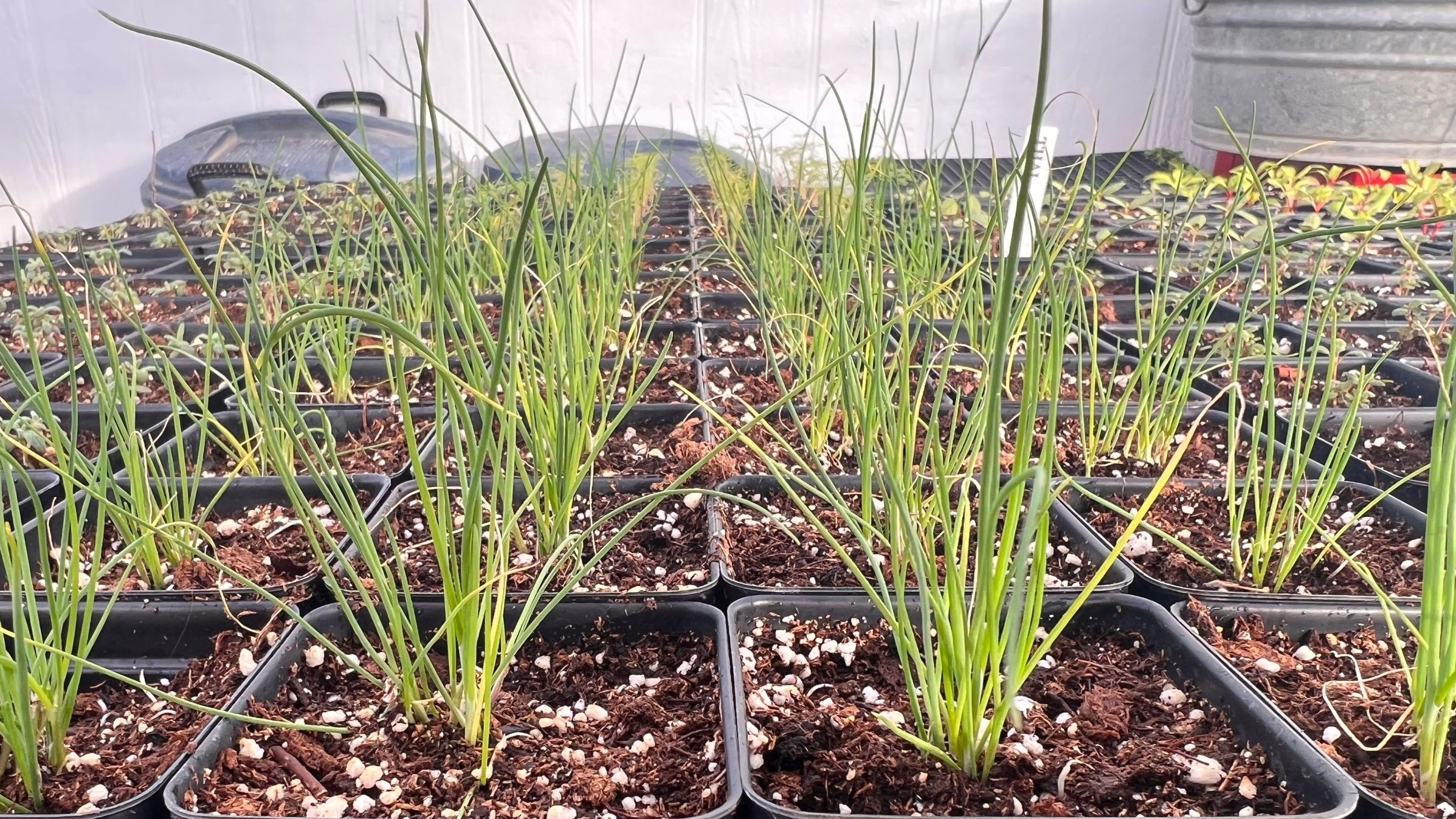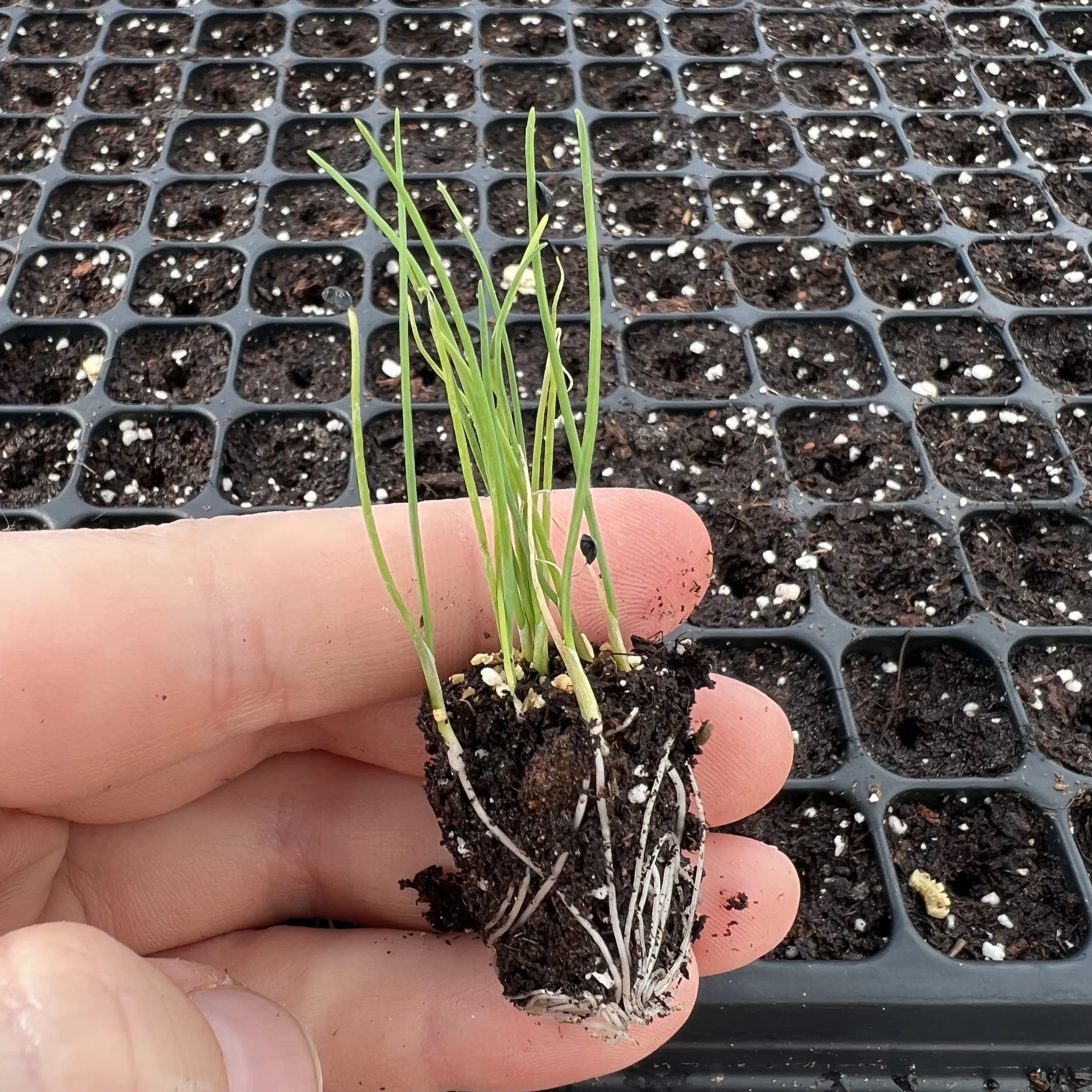
Chives
Allium schoenoprasum
-
When to Plant: Chives thrive in cooler temperatures and can be planted as early as one month before the last frost date. They are perennial.
Click here to find your frost dates.
Light: Sun to Partial Sun
Soil: Well-drained, rich soil is best, but chives are tolerant of most soils. Avoid planting in low areas where water drains toward. If planting in a container, use general-purpose potting mix.
-
Provide moisture when the top 2” of soil/mix is dry. Time between watering cycles is determined by your soil type and climate.
-
If planted in a container, try a slow-release fertilizer for easy care, following the recommended bottle rates. Some potting mixes have already incorporated slow release fertilizer that will last up to 6 months.
If in ground, consider fertilizing once in early spring and late summer to bolster perennial growth.
-
All parts of chives are edible! You can enjoy their flowers in salads and sandwiches or add to your plate for garnish.
Harvest by cutting leaves near the base of the plant. Avoid removing more than 40% of the plant at one time.
-
Flowers can be white, pink or lavender in color. Chive flower stems are woody to support the flower head and aren’t the best for consuming. Once the flowers die, those stems die, turning woody and tan.
Usually they can be pulled from the plant without cutting when they are fully spent, but you can also remove them manually by cutting them back to the base of the plant.

